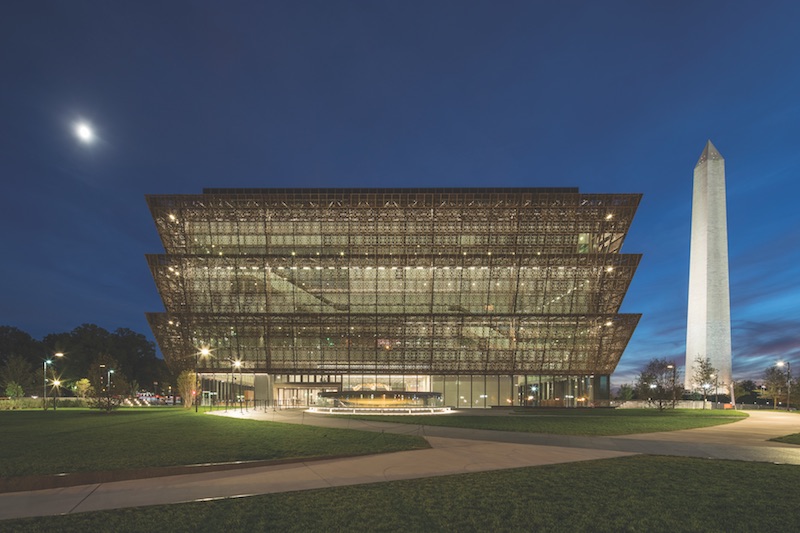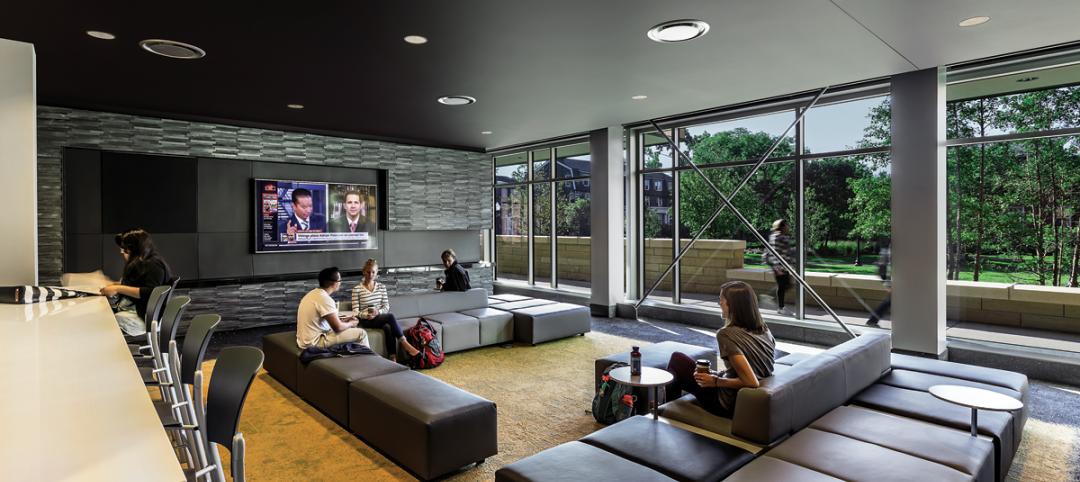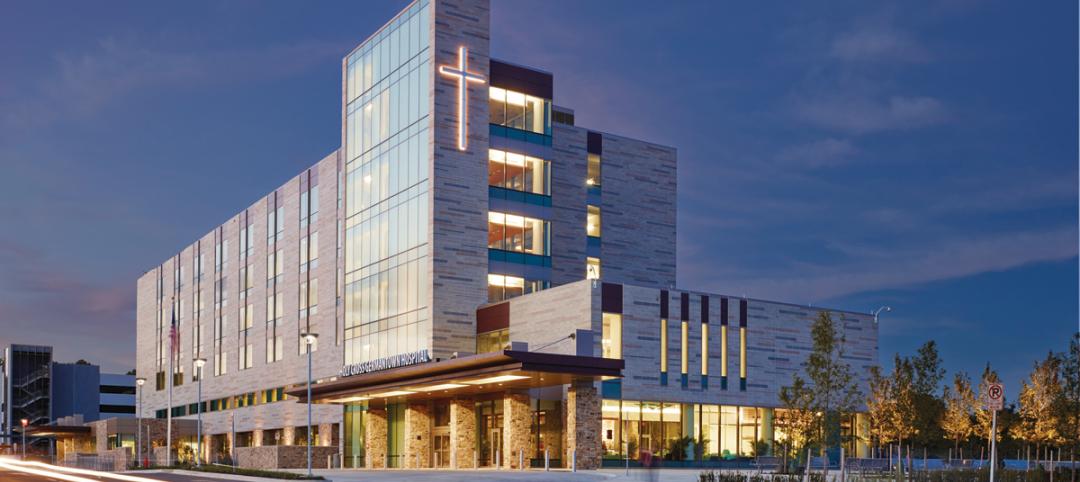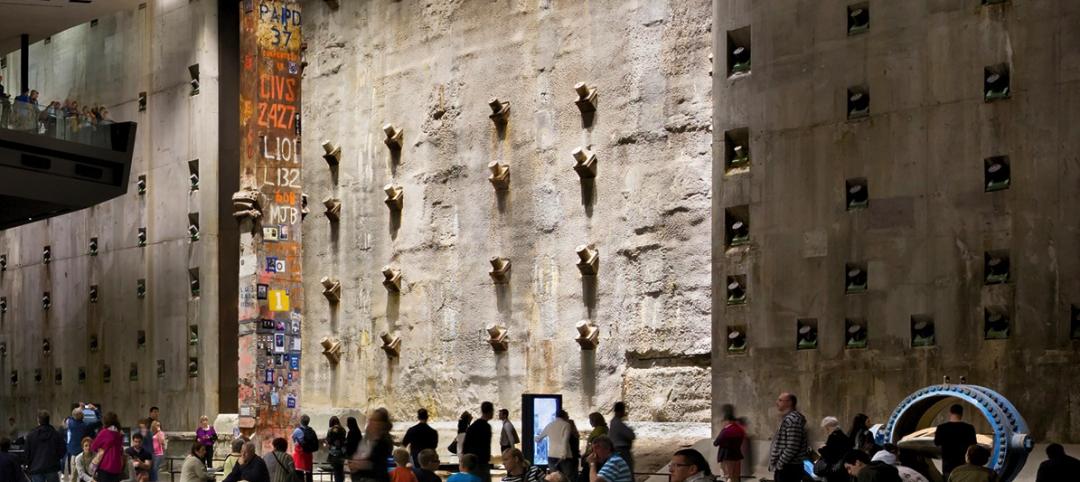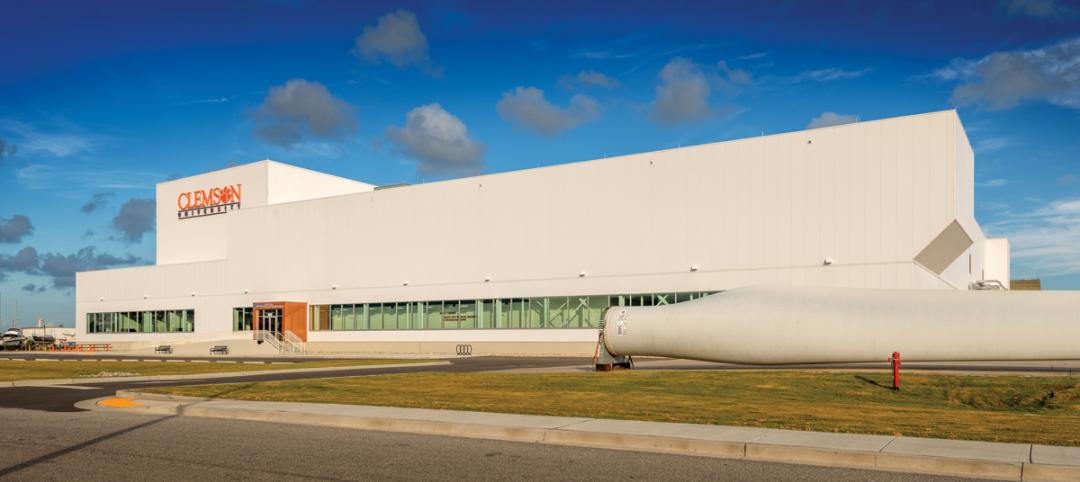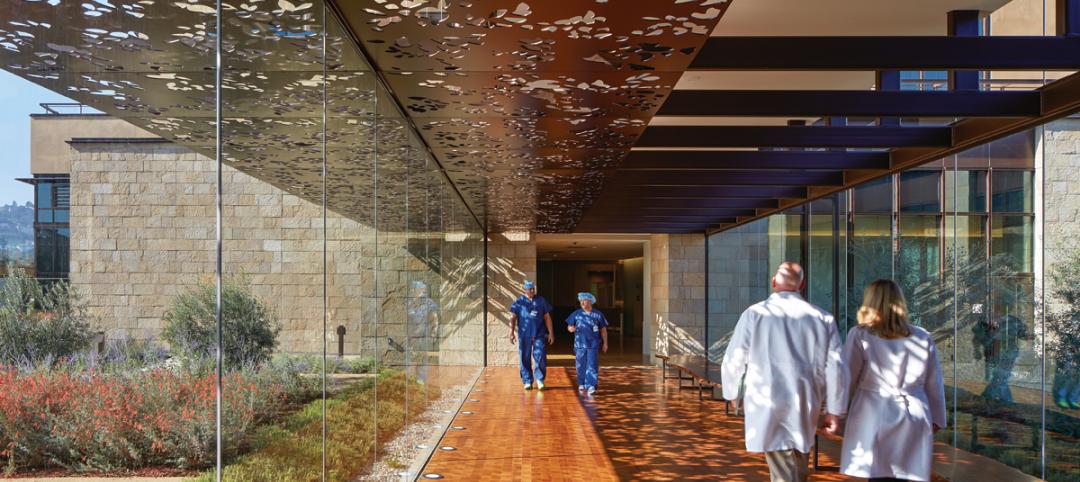This much-ballyhooed project, which sits on the last available lot within the National Mall in Washington, D.C., was first conceived 100 years ago. Its 56-month realization involved three GCs, four architects, more than 30 consultants, 200 subcontractors, and 5,000 craft workers.
At almost every turn, the Building Team faced obstacles, not the least being the District of Columbia’s high water table. Three-fifths of the museum is below grade, and its construction entailed a 70-foot-deep excavation of 350,000 cubic yards of dirt. The Building Team developed a support-of-excavation system that could withstand water pressure of 37,000 pounds per sf.
To meet the client’s request that all ground-floor and above-grade spaces be column free, the Building Team used four steel/cement structural cores to support the building’s superstructure and façade.
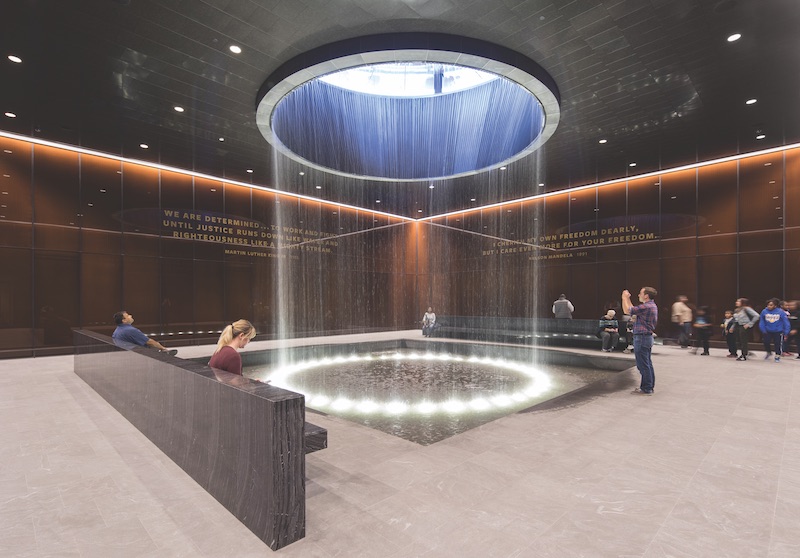 Its below-ground attractions include a Contemplative Court, illuminated by natural light coming through an oculus onto a waterpool. Courtesy Brad Feinknop.
Its below-ground attractions include a Contemplative Court, illuminated by natural light coming through an oculus onto a waterpool. Courtesy Brad Feinknop.
The museum, whose silhouette is designed to resemble a West African crown, is distinguished by “The Corona,” a striking curtain wall consisting of 3,600 panels, modeeld after ironwork in the American South. The original cast-bronze design was deemed too expensive, so the Building Team chose cast-aluminum panels that reduced the cost by $20 million. It also experimented with 20 colors and finishes to achieve the façade’s bronze tint.
Natural light streams through a 20-foot-diameter oculus into an underground Contemplative Court. Outside, a 200-foot-long porch, supported by two 32-ton columns, cantilevers 40 feet over a water feature.
The museum houses 36,000-plus artifacts and was literally built around two of them—an 80-foot-long Pullman railway car, and a guard tower from Louisiana’s notorious Angola Prison—that two 550-ton cranes lowered into place early in construction.
Building Team – Submitting firm, contractor: Clark Construction Group; Owner: The Smithsonian Institution; Architects: Adjaye Associates, Davis Brody Bond, SmithGroupJJR, The Freelon Group; Interior architects: Perkins+Will, Davis Brody Bond (below grade); Exhibit designer: Ralph Appelbaum Associates Structural engineers: Robert Silman Associates (below grade), Guy Nordenson and Associates (above grade); MEP engineer: WSP USA; General contractor: Joint venture of Clark Construction, Smoot Construction, and H.J. Russell & Company' Construction manager: McKissack & McKissack; Landscape architect: Gustafson Guthrie Nichol
General Information – Size 409,000 sf Cost $413 million Construction time January 2012 to September 2016 Delivery method Design-bid-build
Related Stories
Building Team Awards | Apr 9, 2015
IPD-driven fusion facility serves science and student life in Chicago
In dire need of modern science labs and a student union, North Park University built both—in the same building.
Building Team Awards | Apr 9, 2015
‘Prudent, not opulent’ sets the tone for this Catholic hospital
This Building Team stuck with a project for seven years to get a new hospital built for a faithful client.
Building Team Awards | Apr 9, 2015
9/11 museum triumphs over controversy
The Building Team for this highly visible project had much more than design, engineering, and construction problems to deal with.
Building Team Awards | Apr 7, 2015
Unique test facility will help make wind power more feasible
A new facility at Clemson University makes it possible to test the huge stresses that large-scale wind turbines must be able to withstand.
Building Team Awards | Apr 5, 2015
UK's leading foot and mouth disease lab turns containment design inside out
A daring Building Team breaks the bunker mentality common to research containment with this light-filled, open facility in the English countryside.
Building Team Awards | Apr 5, 2015
‘Project first’ philosophy shows team’s commitment to a true IPD on the San Carlos Center
Skanska and NBBJ join forces with Sutter Health on a medical center project where all three parties share the risk.


